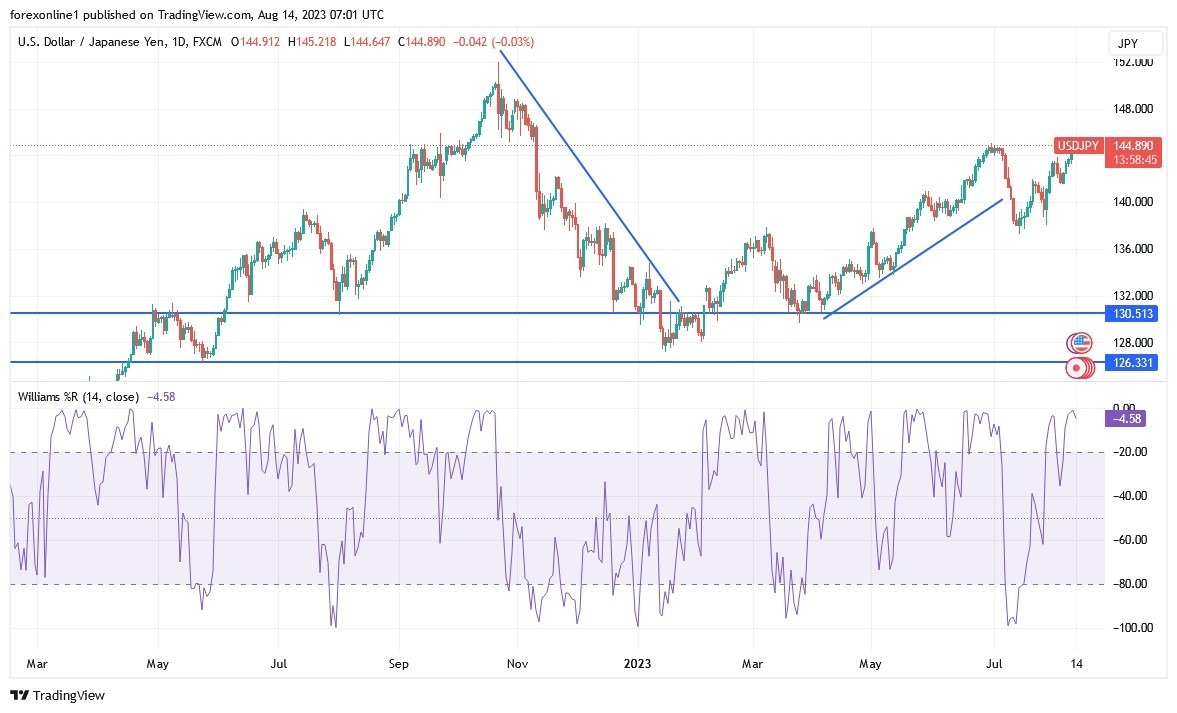- During last week's trading, the bulls succeeded in completing the sharp upward path of the USD/JPY currency pair, with gains that reached the 145.00 resistance level, the highest level for the currency pair in nine months, and settled around those gains at the beginning of this week's trading.
- The US dollar continued its gains against the rest of the other major currencies, despite the cooling of US inflation.
- Its gains especially increased against the Japanese yen, in light of the clear discrepancy between the aggressive US Federal Reserve policy and the negative interest rate policy of the Bank of Japan.
Top Forex Brokers
The US CPI report itself was slightly cooler than expected, with the headline and core rates coming in slightly below expectations on a yearly basis, at 3.2% and 4.7%, respectively. The decline in airfares, used cars and medical costs led to the moderation of price pressures.
However, "super core" US inflation measures such as services excluding Medicare still came in at 6.6%, underscoring the fact that the Fed has won the battle but not the war yet. In the markets, the initial reaction was exactly what one would expect from a cold CPI reading: the US dollar and yields fell, while stocks and gold rose. However, these reactions did not last. Most of these assets quickly erase their moves after the CPI to trade in the opposite direction, as the bond market has gained control.
Once the dust cleared, US bond yields soared, sending stocks lower and supporting the dollar in the process. This reversal likely reflects the recent shift in demand/supply dynamics in the US bond market. Amid runaway government deficits and the Treasury increasing its debt issuance in terms of volume and duration, the balance of power appears to be shifting in favor of higher returns. A soft 30-year Treasury auction reinforced this notion, helping to push yields higher along with some comments from the Fed's Daley, who is usually a centrist but stressed there was still "more work to be done" to policymakers.
With gasoline prices rising and fears that inflation could accelerate again in August, the risk is that Fed Governor Powell will strike a similar tone in his Jackson Hole speech in two weeks' time. In the foreign exchange arena, higher yields translated into a strengthening of the US dollar through the interest rate differential channel. Accordingly, the global reserve currency erased some early losses to close higher against most of the major currencies despite the failure of the Consumer Price Index, which is very encouraging.
It is now clear that the US economy is outperforming its competitors. The federal GDP model now in Atlanta is tracking economic growth near 4% this quarter, while business surveys suggest the eurozone is teetering on the brink of recession and China is losing ground.
USD/JPY Technical Outlook
The price of the USD/JPY currency pair rose now, to trade several levels above the 100-hour moving average line. As a result, it appears that the currency pair is about to enter the overbought levels of the 14-hour RSI. In the near term, it appears that the USD/JPY is trading within a bullish channel formation. It appears that the MACD is about to make a bullish cross in the bullish territory. Therefore, the bulls will target extended gains at around 145.50 or higher at the 146.02 resistance. On the other hand, the bears will target pullbacks around 144.37 or below at the 143.81 support.
In the long run, and according to the performance on the daily chart, it appears that the USD/JPY is trading within a bullish channel formation. It appears that the MACD indicator has recently crossed into bullish territory after the recent decline. Therefore, the bulls-will target long-term profits at around 146.25 or higher at the resistance of 148.07. On the other hand, the bears will look to pounce on the gains at around 143.30 or below the support at 141.47.
 Ready to trade our Forex daily forecast? We’ve shortlisted the best FX trading platform in the industry for you.
Ready to trade our Forex daily forecast? We’ve shortlisted the best FX trading platform in the industry for you.

